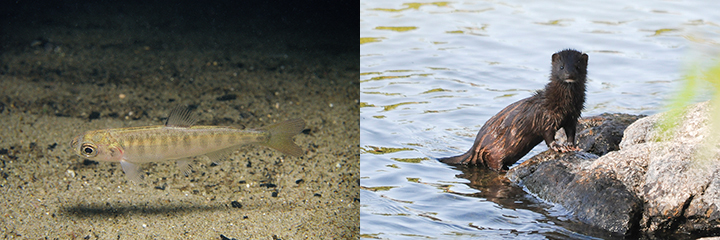In Oregon, an Innovative Approach to Building Riverfront Property for Fish and Wildlife
AUGUST 26, 2014 -- Something interesting is happening on the southern tip of Sauvie Island, located on Oregon's Willamette River, a few miles downstream from the heart of Portland. Construction is once again underway along the river's edge in an urban area where riverfront property typically is prized as a location for luxury housing, industrial activities, and maritime commerce. But this time, something is different. This project will not produce a waterfront condominium complex, industrial facility, or marina. And as much as it may look like a typical construction project today, the results of all this activity will look quite different from much of what currently exists along the shores of the lower Willamette River from Portland to the Columbia River. Indeed, when the dust settles, the site will be transformed into a home and resting place for non-human residents and visitors. Of course, we are referring to the fish, birds, mammals, and other organisms that have existed in and around the Willamette River since long before humans set up home and shop here. Yet in the last century, humans have substantially altered the river and surrounding lands, and high-quality habitat is now a scarce commodity for many stressed critters that require it for their survival. On the site of a former lumber mill, the Alder Creek Restoration Project is the first habitat restoration project that will be implemented specifically to benefit fish and wildlife affected by contamination in the Portland Harbor Superfund Site. The project, managed by a habitat development company called Wildlands, will provide habitat for salmon, lamprey, mink, bald eagle, osprey, and other native fish and wildlife living in Portland Harbor. Habitat will be restored by removing buildings and fill from the floodplain, reshaping the riverbanks, and planting native trees and shrubs. The project will create shallow water habitat to provide resting and feeding areas for young salmon and lamprey and foraging for birds. In addition, the construction at Alder Creek will restore beaches and wetlands to provide access to water and food for mink and forests to provide shelter and nesting opportunities for native birds. Driving this project is a Natural Resource Damage Assessment conducted by the Portland Harbor Natural Resource Trustee Council to quantify natural resource losses resulting from industrial contamination of the river with the toxic compounds PCBs, the pesticide DDT, oil compounds known as PAHs, and other hazardous substances. The services, or benefits from nature, provided by the Alder Creek Restoration Project—such as healthy habitat, clean water, and cultural value—will help make up for the natural resources that were lost over time because of contamination.

Wildlands purchased the land in order to create and implement an early restoration project. This "up-front" approach to restoration allows for earlier implementation of projects that provide restored habitat to injured species sooner, placing those species on a trajectory toward recovery. The service credits—ecological and otherwise—that will be generated by this new habitat will be available for purchase by parties that have liability for the environmental and cultural losses calculated in the damage assessment. Thus when a party reaches an agreement with the Trustee Council regarding the amount of their liability, they can resolve it by purchasing restoration credits from Wildlands. And Wildlands, as the seller of restoration credits, recoups the financial investment it made to build the project. Finally, and most importantly, a substantial piece of land with tremendous potential value for the fish, birds, and other wildlife of the lower Willamette River has been locked in as high-quality habitat and thus protected from future development for other, less ecologically friendly purposes.
 An official website of the United States government.
An official website of the United States government. 


